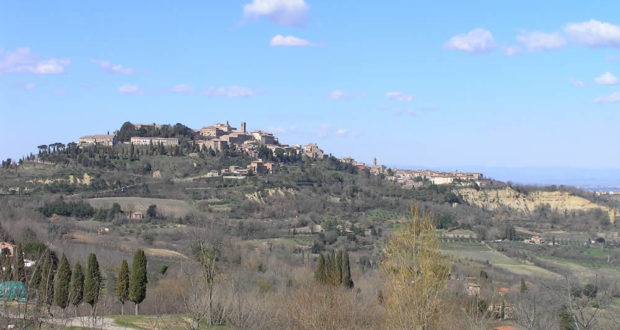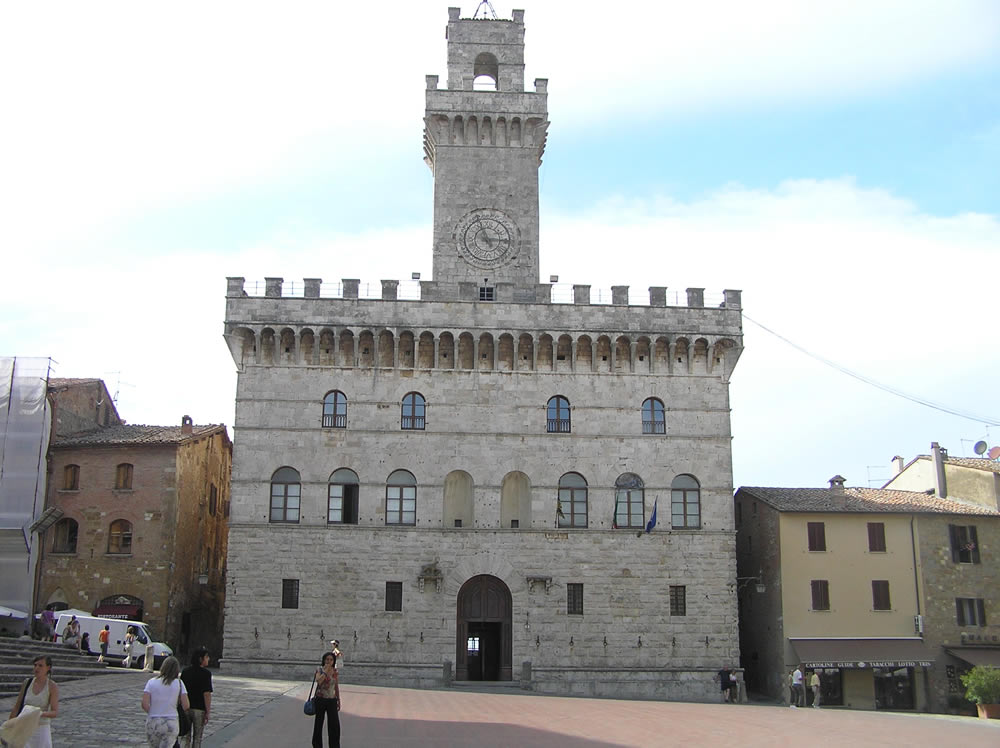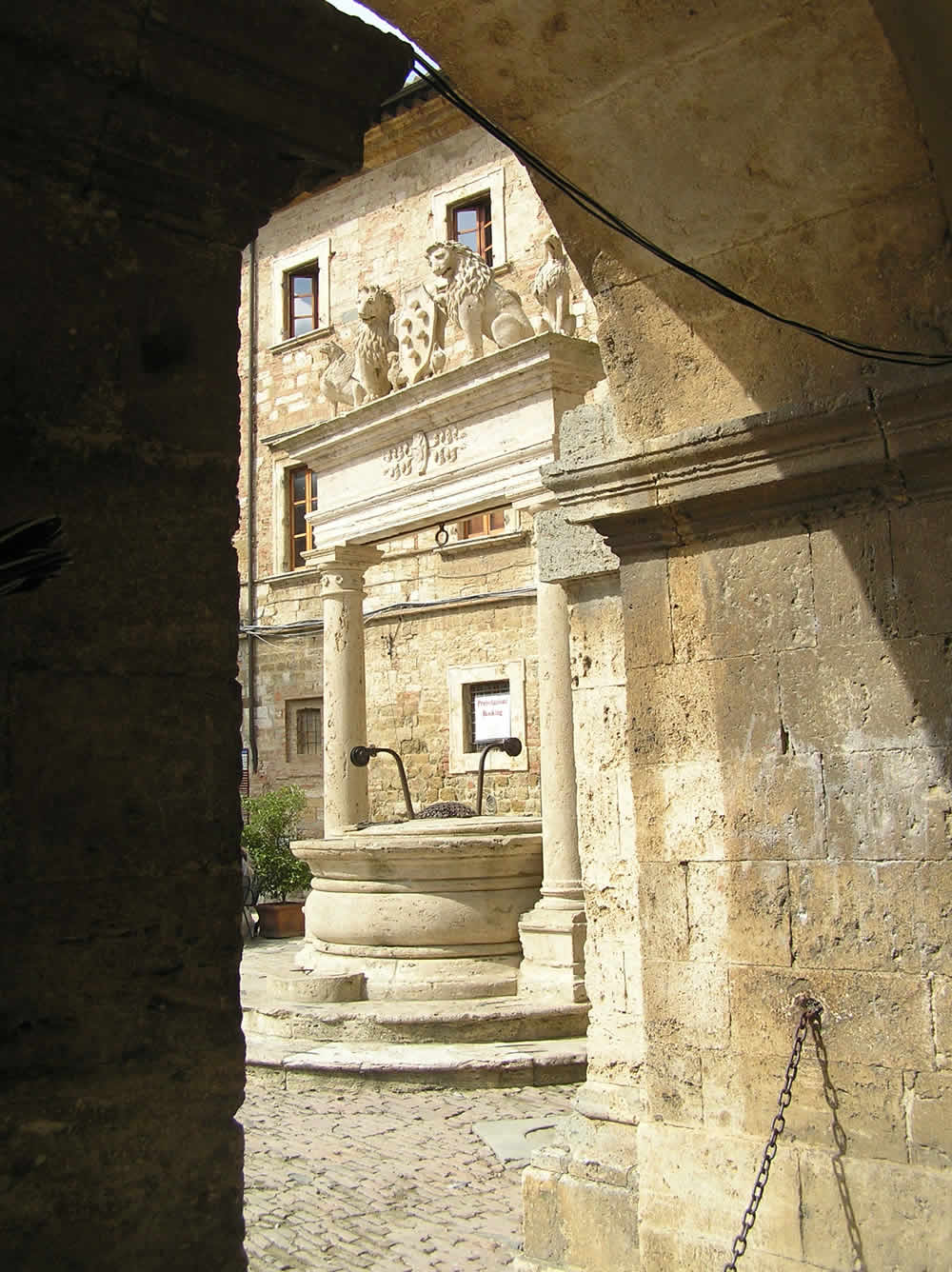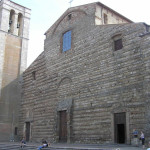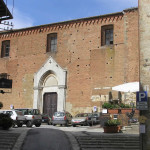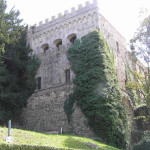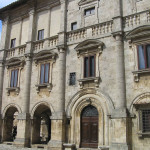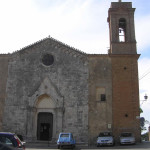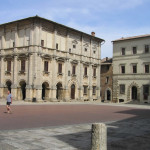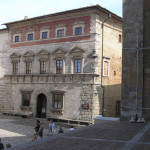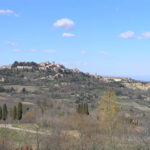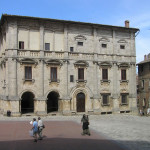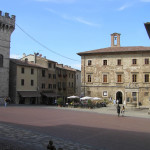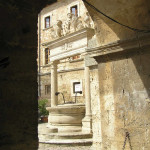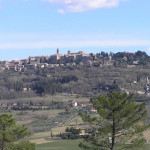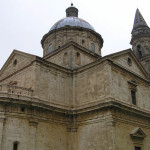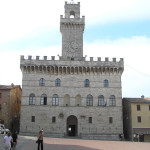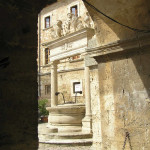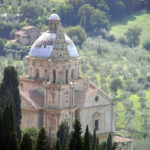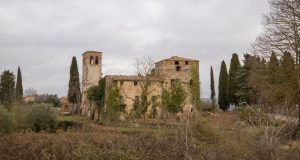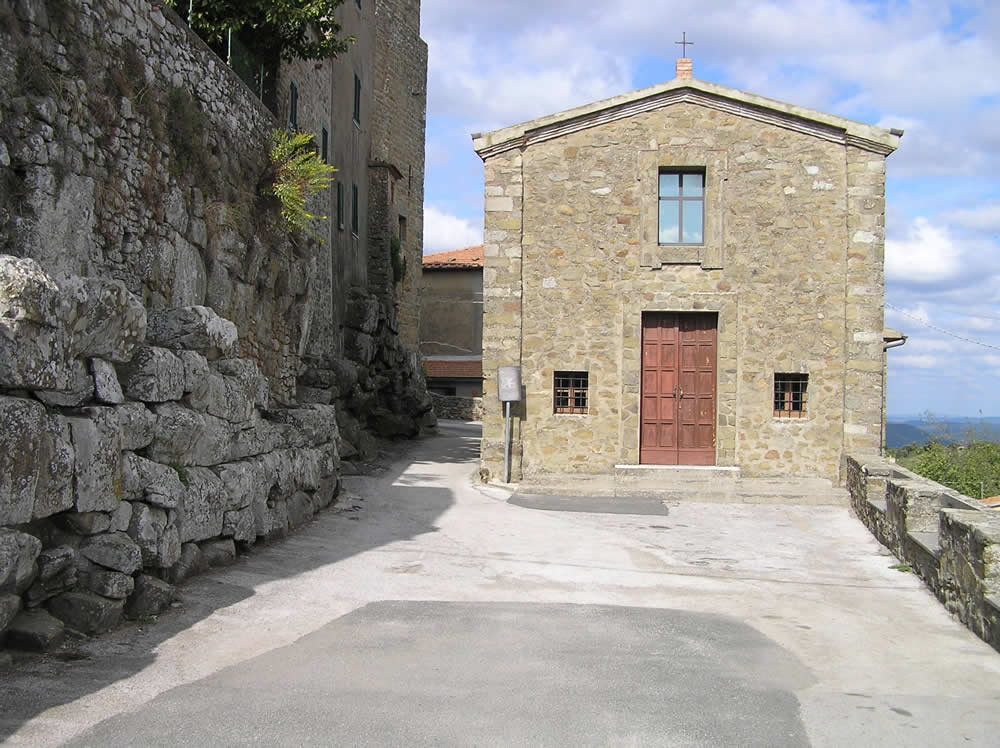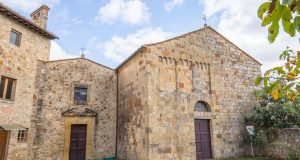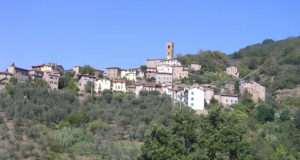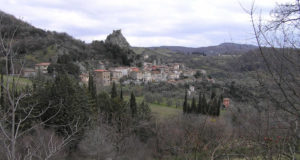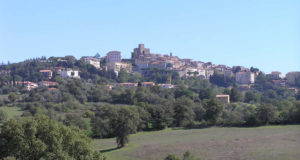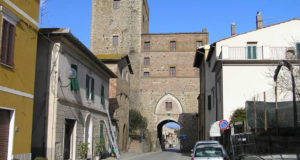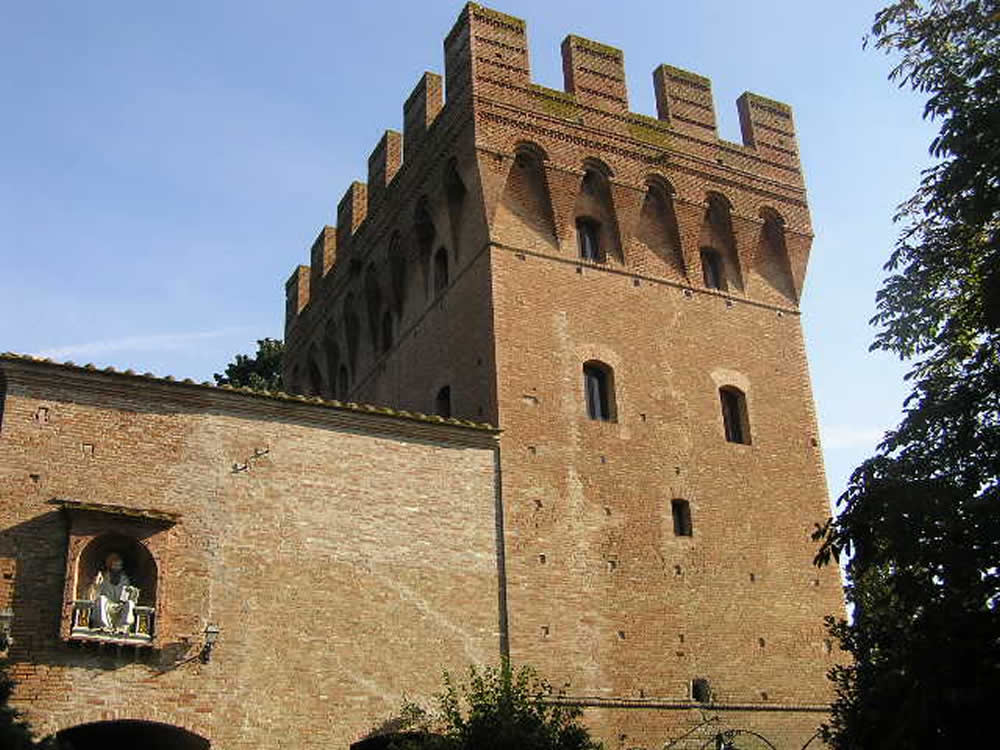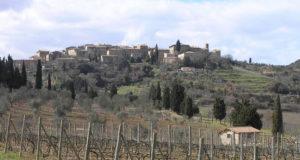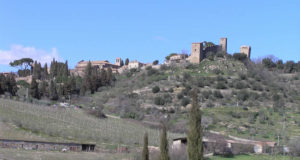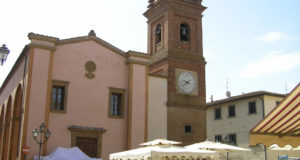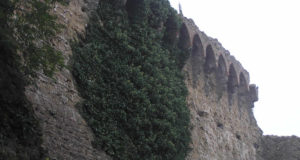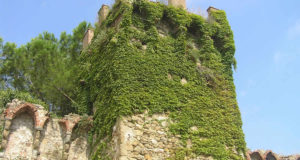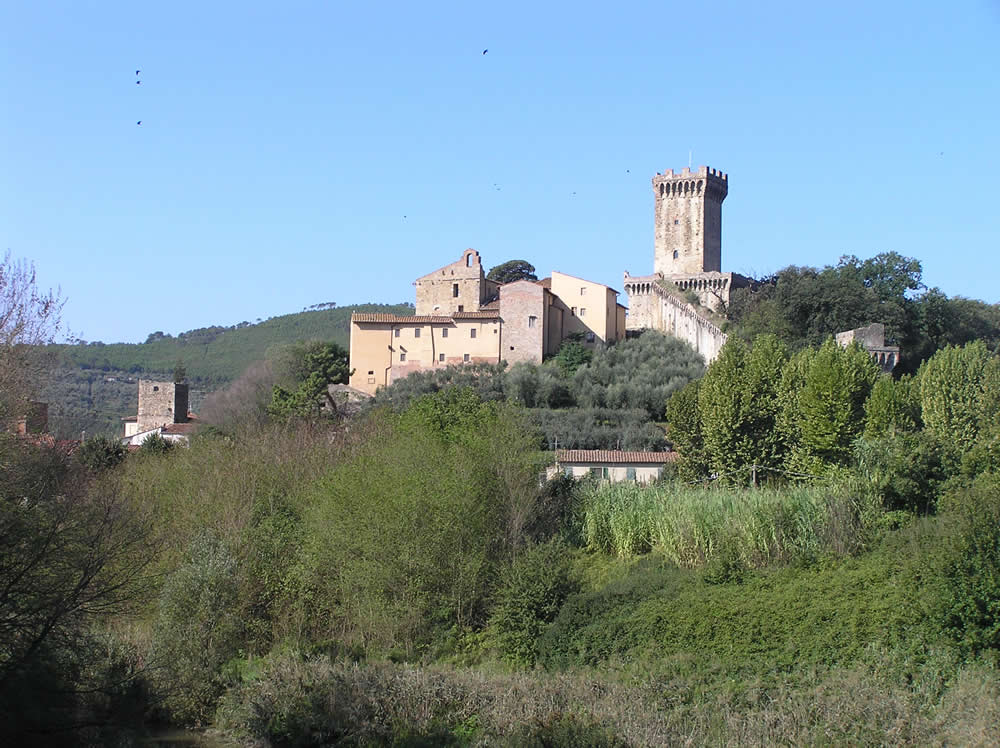![]() Français
Français ![]() Deutsch
Deutsch ![]() Español
Español ![]() Italiano
Italiano
Montepulciano is a beautiful medieval and Renaissance town located on a hill 605 meters high in the south of the province of Siena. Founded at the beginning of the eighth century as a castle, on a hill that controlled the transits between the Val d’Orcia and Val di Chiana. Montepulciano became rich in the Middle Ages thanks to trade and manufacturing activities. Repeatedly contested between Siena and Florence, in 1404 became permanent Florentine possession. This was the heyday for the city that flourished the eminences architectural renaissance that still characterize it.
A MEDIEVAL AND RENAISSANCE TOWN THAT DOMINATES THE VAL DI CHIANA
In the lower part of the town, outside the walls is the church of Sant’Agnese built in the early fourteenth century. The entrance to the city from the lower part, defended by powerful Medici bastions designed by Antonio da Sangallo the Elder, is through the Porta al Prato. From the gate go up towards the top of the city along the via Gracciano nel Corso lined with medieval and Renaissance houses, including the palace Avignonesi in late-Renaissance style, the palace Tarugi, the palace Bucelli and the palace Cocconi. You arrive at the Renaissance church of Sant’Agostino, built and designed by Michelozzo in the fifteenth century. Near is also the church of Saint Lucia with baroque facade that houses the Madonna of Mercy by Luca Signorelli.
Continuing we pass the palace Buratti-Bellarmino with a decorated atrium with frescoes by Zuccari, then is the palace Venturi and the Lodges of the Grain (Logge del Grano) of 1570. The palace Cervini – designed by Sangallo in the mid-sixteenth century-, the palace Egidi and the church of Jesus (Chiesa del Gesù) are most interesting buildings of the next section.
Then comes the birthplace of Poliziano and finally the church of Santa Maria dei Servi, a fourteenth-century building with Gothic facade, the interior is decorated in Baroque stucco. It borders the Fortress or Medici Bulwark and descend towards the majestic Piazza Grande. The center of the town of Montepulciano is the Piazza Grande a large Renaissance square where overlooking the Duomo, the Palazzo Comunale, ther Palazzo Contucci, the Palazzo del Capitano del Popolo and the Palazzo Nobili-Tarugi. In the square is also the the sixteenth century Pozzo dei Grifi e dei Leoni.
THE MUNICIPAL PALACE
The Palazzo Comunale is a medieval building transformed in the fifteenth century by Michelozzo into the current forms that recall the Palazzo Vecchio in Florence. From the tower of the building you have magnificent views of the surrounding countryside and the town of Montepulciano. The Duomo is a large Latin cross church built, designed by Ippolito Scalza, between 1592 and 1630. The facade has remained unfinished, inside there are sculptures by Michelozzo, a 14th century baptismal font by Giovanni di Agostino, terracottas by Andrea della Robbia and a triptych by Taddeo di Bartolo.
Returning towards the lower part of the city along the Via Ricci we find the sixteenth-century Palazzo Ricci and the palace Neri-Orselli that houses the Civic Museum and the Art Gallery Crociani (Museo Civico e Pinacoteca Crociani) with important paintings and pottery. Then we arrive at the church of San Francesco with a Gothic portal and from which we have beautiful views of the countryside and hills of Montepulciano. From the nearby Gate (Porta dei Grassi) you can get off at the church of San Biagio or Sanctuary of the Madonna di San Biagio, the masterpiece of Antonio da Sangallo the Elder. Along the road leading to Cortona is the church of Our Lady of Grace (Madonna delle Grazie) designed by Ippolito Scalza in Mannerist style.
HOW TO GET
Montepulciano is situated in the center of an area rich in history, art and fine wine, famous is the production of Vino Nobile di Montepulciano. The city is only 13 km from Pienza and 67 km from Siena and is well served by the toll exits of Valdichiana (for those coming from Florence) and Chiusi Chianciano (for those coming from Rome) of the Autostrada del Sole (A1).
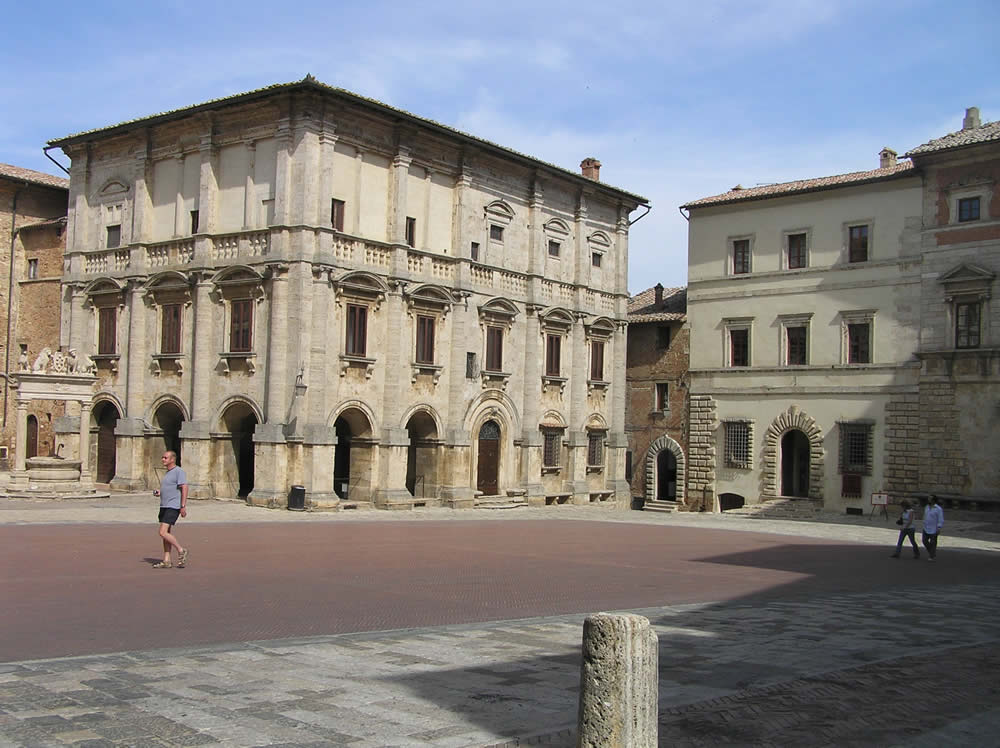
Palazzo Tarugi or dei Nobili (16th century), Montepulciano, Siena. Author and Copyright Marco Ramerini.
USEFUL INFORMATION:
Weekly Market Montepulciano: Thursday
Information Offices – Montepulciano
Informazioni e servizi turistici
Via Gracciano nel Corso
tel. +390578757341 – fax 0578757341
BIBLIOGRAPHY
- AA. VV. “Toscana” Guide Rosse Touring Club Italiano, 2007
- AA. VV. “Montepulciano perla del Cinquecento” 2011, C&P Adver Effigi
- Mangiavacchi Agostino “La chiesa cattedrale di Montepulciano. Le altre chiese della città” 2009, Tozzuolo
- Singleton Kate, cur. Ruffa G. “Montalcino e Montepulciano. Val d’Orcia e dintorni” 2001, Slow Food
- AA. VV. “Montepulciano e Montefollonico” 2012, KMZero
- cur. Società storica poliziana “Montepulciano città nobile di Toscana” 2006, Le Balze
- AA. VV. “Montepulciano. Guida storico artistica” 2004, Le Balze
- cur. Barcucci. P. “Montepulciano. Guida storico artistica” 2011, C&P Adver Effigi
- The Cathedral (16-17th century), Montepulciano, Siena. Author and Copyright Marco Ramerini.
- The Church and Convent of San Francesco, Montepulciano, Siena, Montepulciano, Siena. Author and Copyright Marco Ramerini
- The Fortress, Montepulciano, Siena. Author and Copyright Marco Ramerini
- Palazzo Tarugi or dei Nobili (16th century), Montepulciano, Siena. Author and Copyright Marco Ramerini.
- The Church of Santa Maria dei Servi (14th century), Montepulciano, Siena. Author and Copyright Marco Ramerini
- Palazzo Tarugi or dei Nobili (16th century), Montepulciano, Siena. Author and Copyright Marco Ramerini.
- Palazzo Contucci, Montepulciano, Siena. Author and Copyright Marco Ramerini
- Montepulciano, Siena. Author and Copyright Marco Ramerini.
- Palazzo Tarugi or dei Nobili (16th century), Montepulciano, Siena. Author and Copyright Marco Ramerini.
- The Palazzo del Capitano del Popolo, Montepulciano, Siena. Author and Copyright Marco Ramerini
- The Pozzo de’ Grifi und de’ Leoni, Montepulciano, Siena. Author and Copyright Marco Ramerini
- Montepulciano, Siena. Author and Copyright Marco Ramerini..
- Church or Sanctuary of the Madonna di San Biagio, Montepulciano, Siena. Author and Copyright Marco Ramerini
- Palazzo Comunale, Montepulciano, Siena. Author and Copyright Marco Ramerini
- Die Pozzo de’ Grifi und de’ Leoni, Montepulciano, Siena. Author and Copyright Marco Ramerini
- Church or Sanctuary of the Madonna di San Biagio, Montepulciano, Siena. Author and Copyright Marco Ramerini
 Borghi di Toscana Guida ai borghi e ai paesaggi della Toscana
Borghi di Toscana Guida ai borghi e ai paesaggi della Toscana
